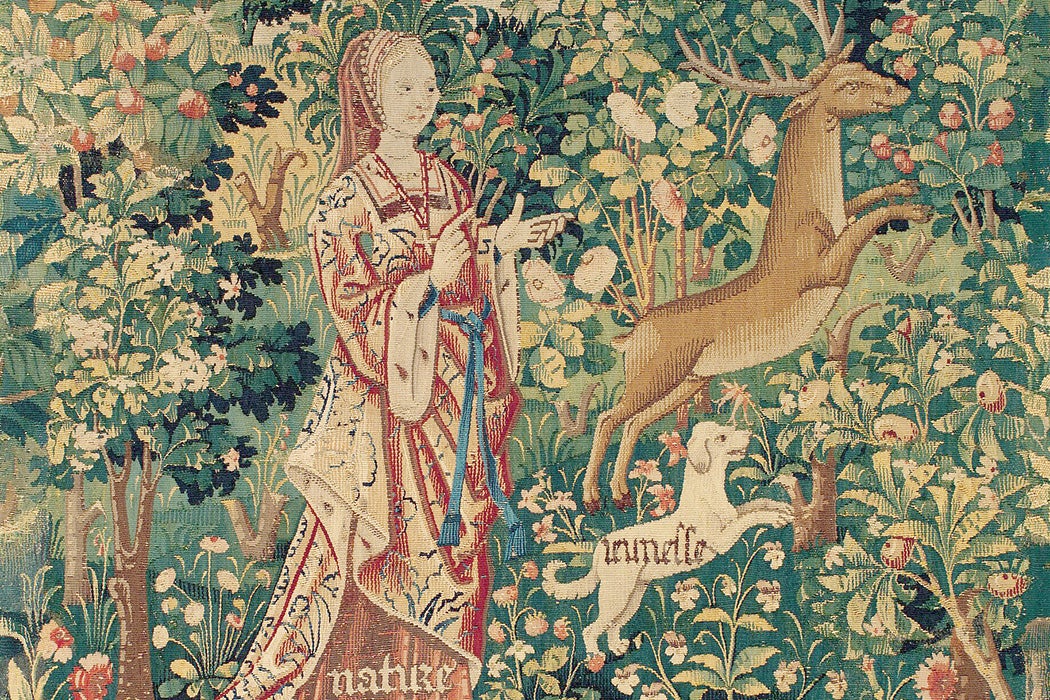Bear cubs are born as limbless blobs of fur, only taking form after being licked into shape by their mothers. When pursued by hunters, beavers bite off their own testicles. Storks that have grown too old to fly are carried around on their children’s backs.
These are “facts” that you might learn when perusing a medieval or early modern bestiary. People often wonder how our predecessors could have believed such outlandish things about the world around them—wild leaps of fancy that must have been contradicted by observation. The thing is, these “facts” were more than facts. They weren’t inert pieces of information but rather living particles of a deeper narrative. Each one was a bite-sized religious parable: the beavers biting off their testicles, for instance, stood as a symbol of casting off sin in the moment of duress; the baby bear licked into shape reflected the necessity of intentional cultivation in order to become a complete person, while the storks carrying their elders served as models of filial piety.
In this way, the wild world was the Bible’s living counterpart: it was “the Book of Nature,” as the saying went, a breathing text open to interpretation all around us. This idea was most fully expressed in fifteenth-century monk Raymond Sebond’s Natural Theology, written in the mid-1430s. In Sebond’s words, “each creature is but as a letter, drawn by the hand of God.”
This metaphor echoed over hundreds of years, taking slightly different forms. In 1578, the poet Guillaume de Salluste Du Bartas described the creation of the world as a kind of cosmic printing press. As translated by John Sylvester, he wrote that
The World’s a Booke in Folio, printed all
With God’s great Workes in Letters Capitall:
Each Creature, is a Page, and each effect
A faire Caracter, void of all defect.
The Book of Nature underlined messages spelled out in the Bible. In the metamorphosis of silkworms, the shedding of snakes, the sprouting of seeds, people discovered the truth of resurrection. In the growth of pearls—the result, according to the early moderns, of a union between an oyster and a “heavenly dew”—they saw the story of the Immaculate Conception, infinitely replayed. It was a world structured like a vast allegory; the laws of nature were, ultimately, metaphorical.
As historian of science Kathleen Crowther‐Heyck writes about sixteenth-century Germans, “all natural objects were inherently holy because God had created them.” Written descriptions and direction observations of
the human body, the heavens, plants, animals, or any other aspect of the natural world thus could bring a devout Christian to a deeper knowledge and love of the Creator. The natural world provided a different means of access to the divine, one consonant with but not identical to the Bible.
The point of contention, really, was what it meant to read the Book of Nature. Could anyone interpret the living messages of animals, or did it require special expertise? According to literature and science scholar Katherine Calloway, John Donne found real advantages of the Book of Nature over the Bible, finding that Sebond,
when he had digested this book into a written book, durst pronounce, that it was an Art, which teaches al things, presupposes no other, is soon learned, cannot be forgotten, needs no witnesses, and in this, is safer than the Bible it self, that it cannot be falsified by Hereticks.
Francis Bacon, on the other hand, held that nature’s meaning was a mystery to be unraveled. Historian Raphaële Garrod writes that “A recurring Calvinist metaphor…states that we need the spectacles of scripture to read the book of nature.” On the other hand, Garrod notes, John Calvin saw scripture as a kind of baby-talk, asking, “For who, even of the meanest capacity, understands not, that God lisps, as it were, with us, just as nurses are accustomed to speak to infants?”
Weekly Newsletter
In this view, there once had been a time the Book of Nature—or even scripture—needed interpretation. Before Adam and Eve’s expulsion from Paradise, animals and humans had lived in perfect harmony, and Adam had perfect knowledge of the beasts, as reflected by the fact that he was able to give them proper names.
After the Fall, the natural world became hostile, the Book of Nature, illegible. In this context, contrary to the way we tend to think about scientific progress today, the pursuit of knowledge about the natural world was backward-looking. It was an attempt to return to Eden.
Support JSTOR Daily! Join our membership program on Patreon today.







